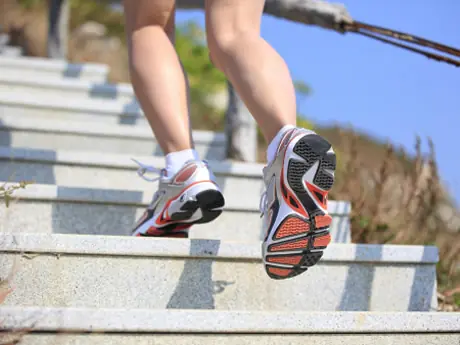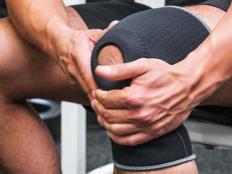
If you borrow one element (besides running) from Rocky Balboa's training regimen, make it stair-climbing. The plyometric motion strengthens the same muscles as lunges and squats, and taxes your lungs and heart as you power to the top.
"Stairs force you to work against gravity, and this helps build two essential needs for runners: strength and power," says Anne Moore, M.S., an exercise physiologist and running coach in Charleston, South Carolina. You need both, whether you're kicking to the finish of a 5K or trying to maintain pace during the later miles of a marathon. Moore adds that stair-climbing "forces you to utilize muscle stabilizers, like the gluteus medius, that get neglected during regular runs," because you're balancing on and activating one leg, briefly, as the other moves to the next step. Strengthen these areas and you'll reduce your risk of injury. (Be sure to follow these 10 Rules for Injury Prevention at all times.)
Finally, stairs are much steeper than most hills: Indoor stairs have a roughly 65 percent grade, while Boston's Heartbreak Hill is just 4.5 percent. That's why climbing them accelerates your heart rate so rapidly and makes you breathe faster to take in more oxygen. This, in turn, improves your VO2 max—the maximum amount of oxygen you can utilize during intense exercise. "This teaches your body to use that oxygen and convert it to energy quicker," says Moore.
A greater VO2 max means you can run harder and for longer durations. A study in the British Journal of Sports Medicine found that short bouts of stair-climbing five days a week for eight weeks improved VO2 max by 17 percent among young women.
More: How to Maximize Your VO2 Max Training
Weave these stair workouts into your weekly training and watch your performance reach new heights.
The 10 Strength Moves Every Runner Needs
Run Up Like ... A Competitor
A handful of races, including the Empire State Building Run-Up on February 5, involve ascending multiple flights of stairs as fast as you can (86—or 1,576 steps—for the Run-Up). Speeding up stairs takes a lot of explosive power, so you quickly reach your anaerobic threshold (AT), the point where your body creates more lactic acid than it can process. "Training beyond your AT leads to an improved threshold level and ultimately a faster pace before you 'feel the burn,'" says John Honerkamp, who oversees online training programs for the New York Road Runners. This is helpful even if you don't aspire to stair-racing. (If you do, find events at towerrunning.com.)
Find The Best Running Shoes for You
The Workout
After a 10-minute warm-up, run hard up stairs for 20 to 30 seconds, then walk back down. Repeat for 20 to 30 minutes. Or run stairs for 10 minutes after a long run to help your body build endurance and learn to push through fatigue.
- 1
- of
- 2
About the Author

Get ACTIVE on the Go


Couch to 5K®
The best way to get new runners off the couch and across the finish line of their first 5K.
Available for iOS | Android






Discuss This Article